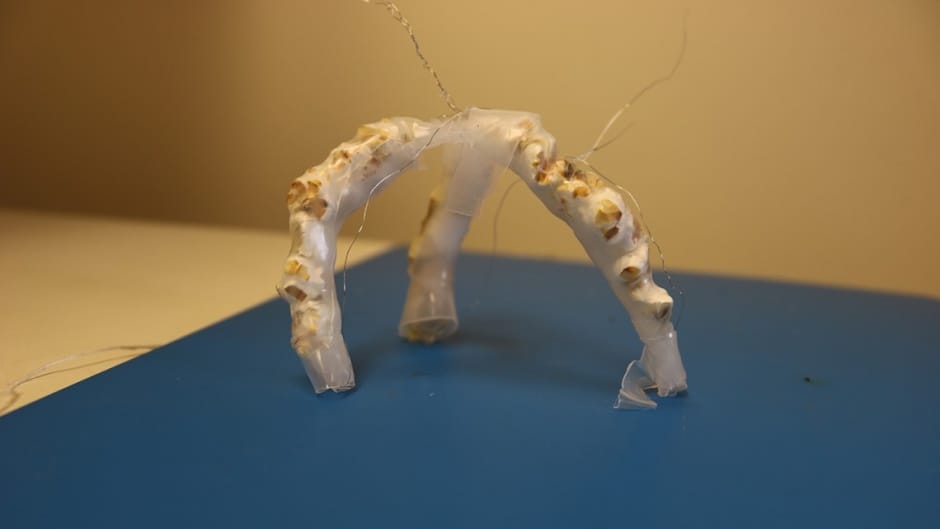The properties of materials as a power source is not a new idea. It's the basis of steam power, for example. But a team from Cornell University in New York is now investigating the potential of material we are all familiar with, but more often while watching films than any industrial context.

When heated, dried maize kernels expand more than 10 times in size, change their viscosity by a factor of 10 and transition from a regular shape to an irregular one within a fraction of a second, potentially exerting a significant force on any container that confines them. PhD student Stephen Ceron and his supervisor, electrical and computer engineer Katrin Peterson, recently co-authored a paper on this subject which they presented at the recent IEEE International Conference on Robotics and Automation in Brisbane.
Peterson explains that a goal of Cornell's Collective Embodied Intelligence Laboratory, of which she is the director, is to construct very minimalist robots that can work together in large numbers to achieve a goal. "Simple robots are cheap and less prone to failures and wear, so we can have many operating autonomously over a long time," she said. " So we are always looking for new and innovative ideas that will permit us to have more functionalities for less, and popcorn is one of those."
Popcorn has a number of significant advantages. Along with its startling material properties when it changes state, it is cheap, readily available, sustainable, biodegradable and, of course, edible. "Pumps and compressors tend to be more expensive, and they add a lot of weight and expense to your robot," said Ceron, the paper's lead author. "With popcorn… you just need to apply voltage to get the kernels to pop, so it would take all the bulky and expensive parts out of the robots."
Some of the applications Ceron showed in his presentation use popcorn to power miniature jumping robots. Moreover, the mixture of hard, unpopped granules and lighter, larger popped granules could replace fluids in soft robotics without, as Ceron said, any need for compressors or air pumps. They can also be used in edible devices that would be suitable for use for certain medical applications, he added.
One obvious drawback is that a popped kernel can't be unpopped. However, popped corn is soluble in water, making it potentially possible to reload and reuse a popcorn robot.
Although this may seem very strange, Peterson insists that this sort of lateral thinking is very important in robotics. "Robotics is really good at embracing new ideas, and we can be super creative about what we use to generate multifunctional properties," she said. "In the end we come up with very simple solutions to fairly complex problems. We don't always have to look for high-tech solutions. Sometimes the answer is right in front of us."




Glasgow trial explores AR cues for autonomous road safety
They've ploughed into a few vulnerable road users in the past. Making that less likely will make it spectacularly easy to stop the traffic for...